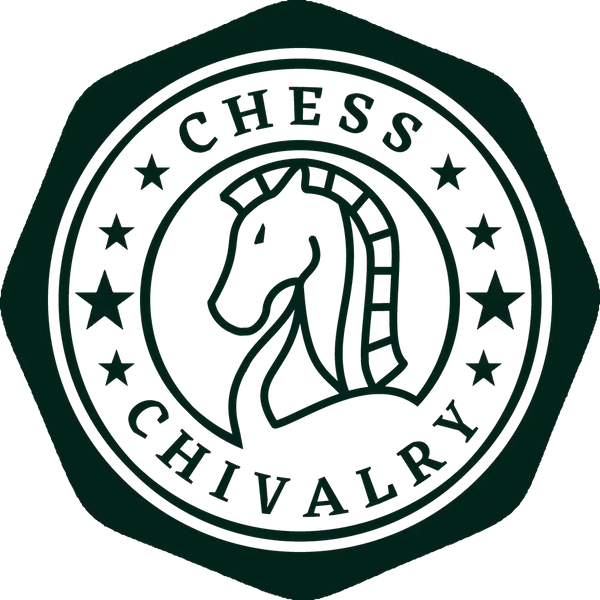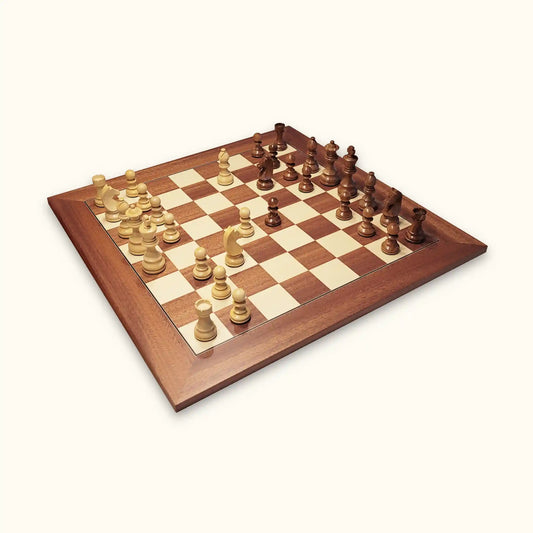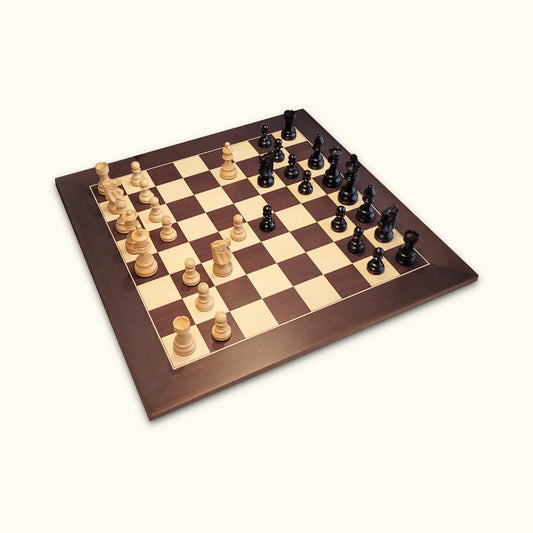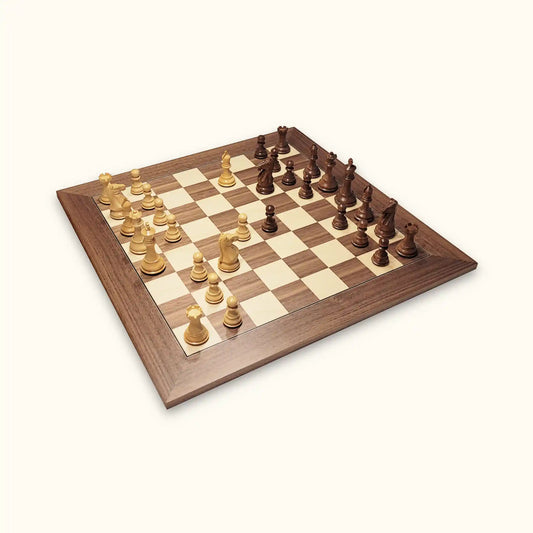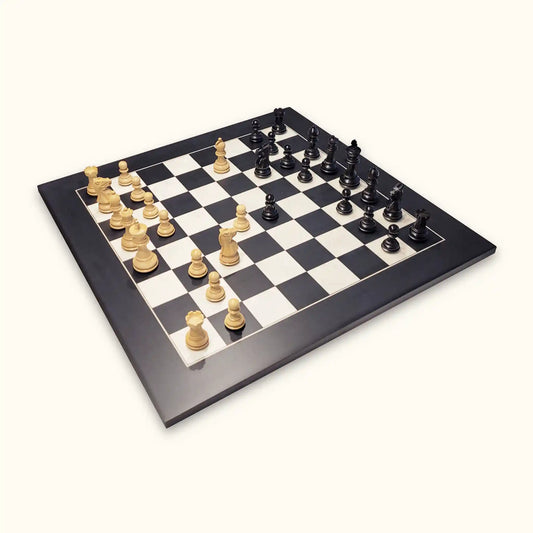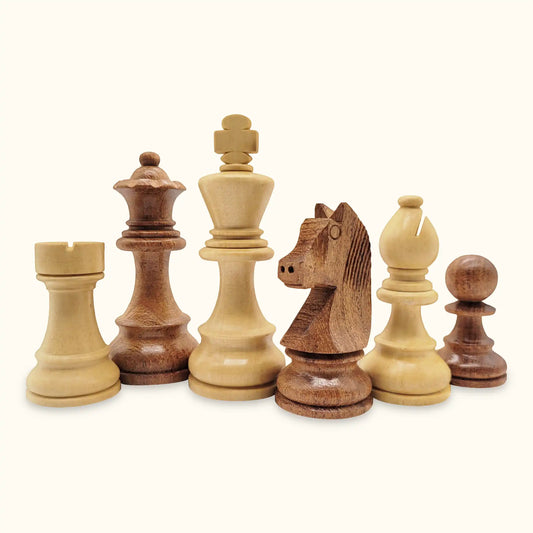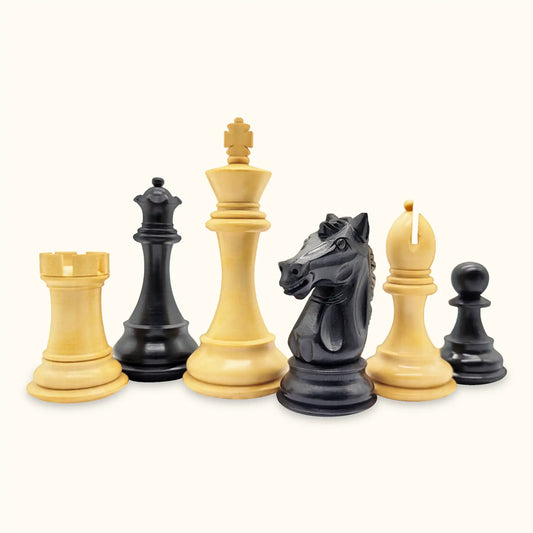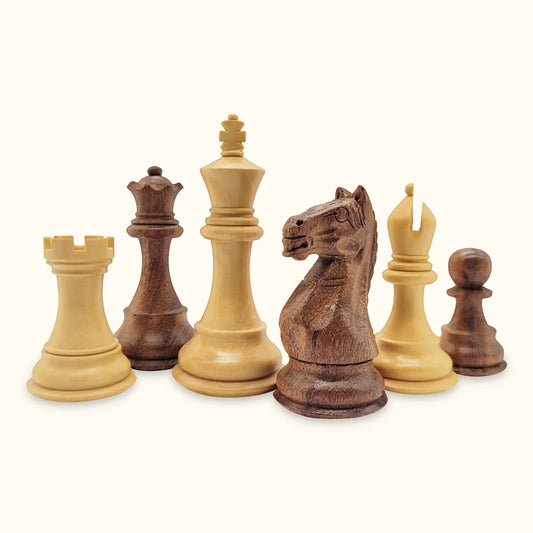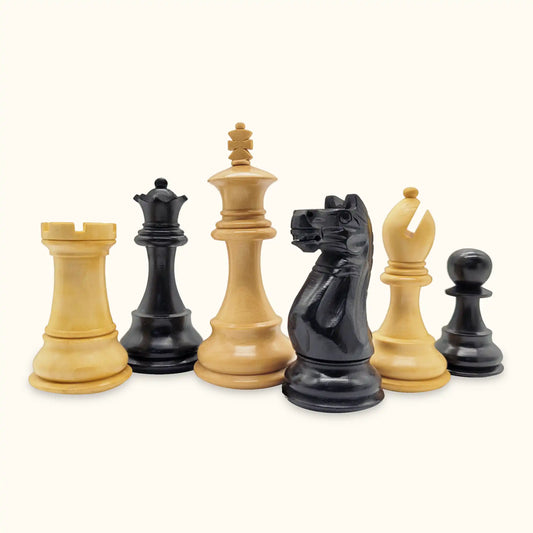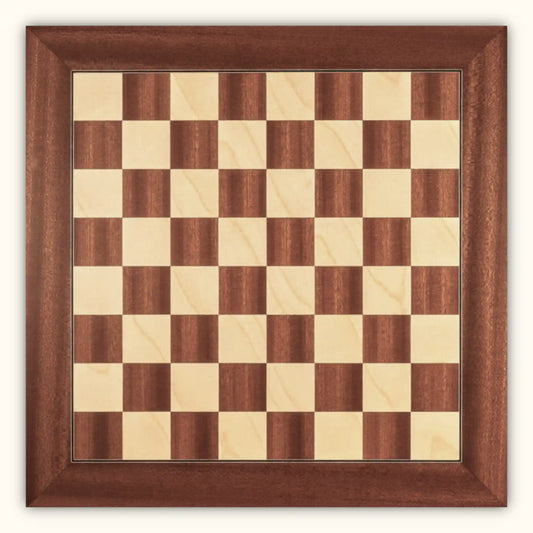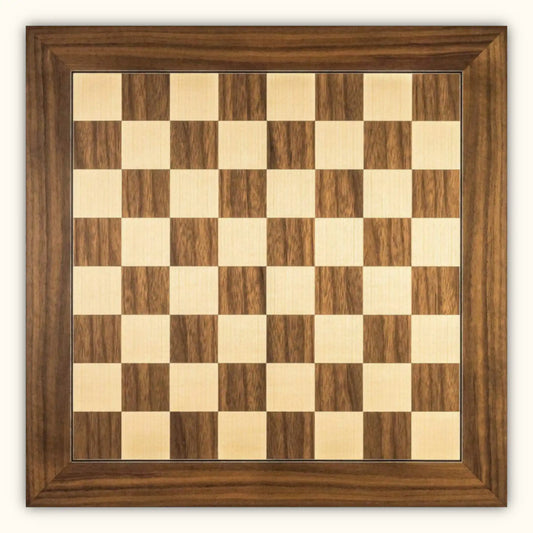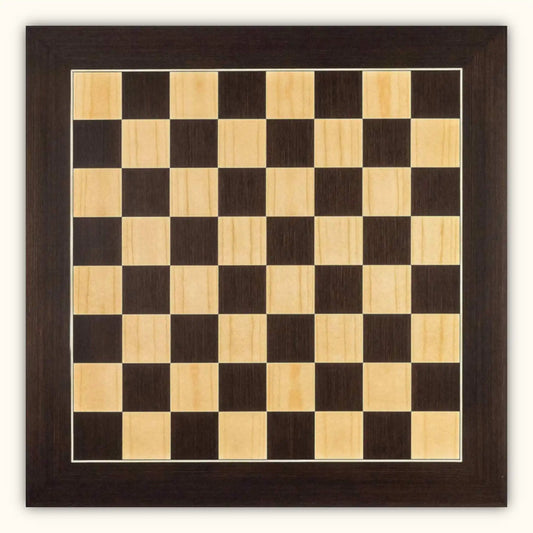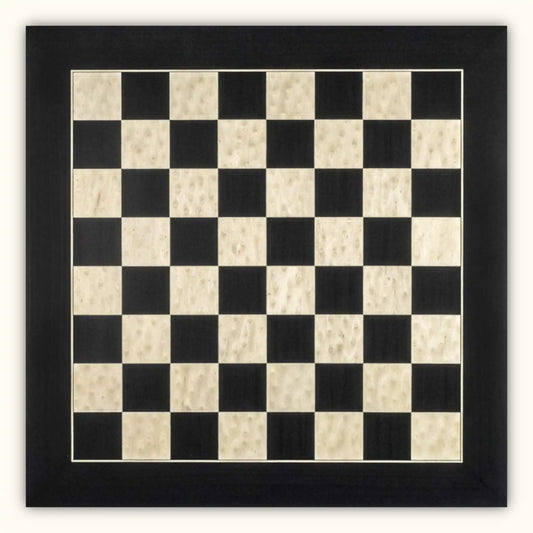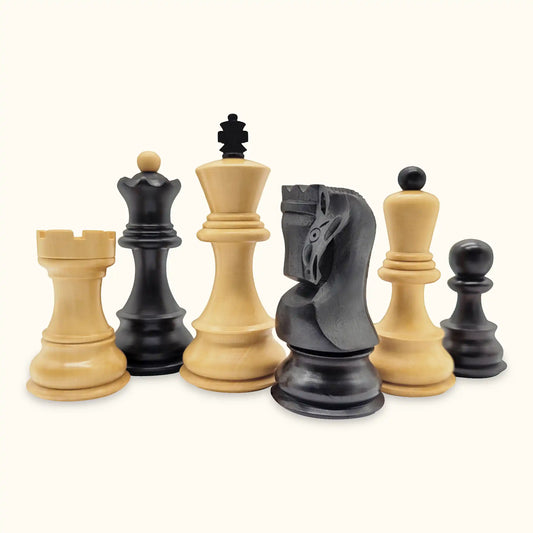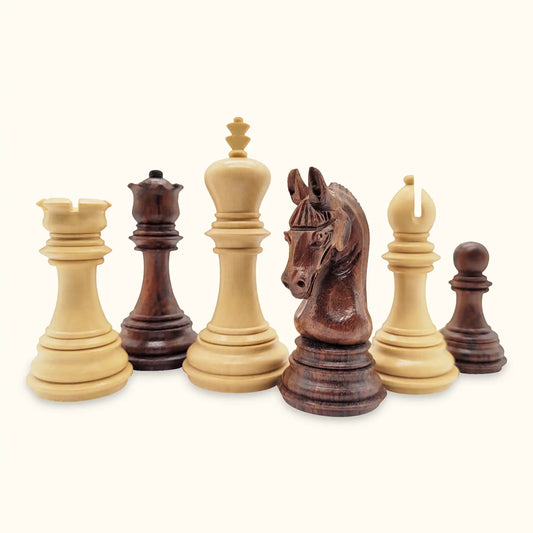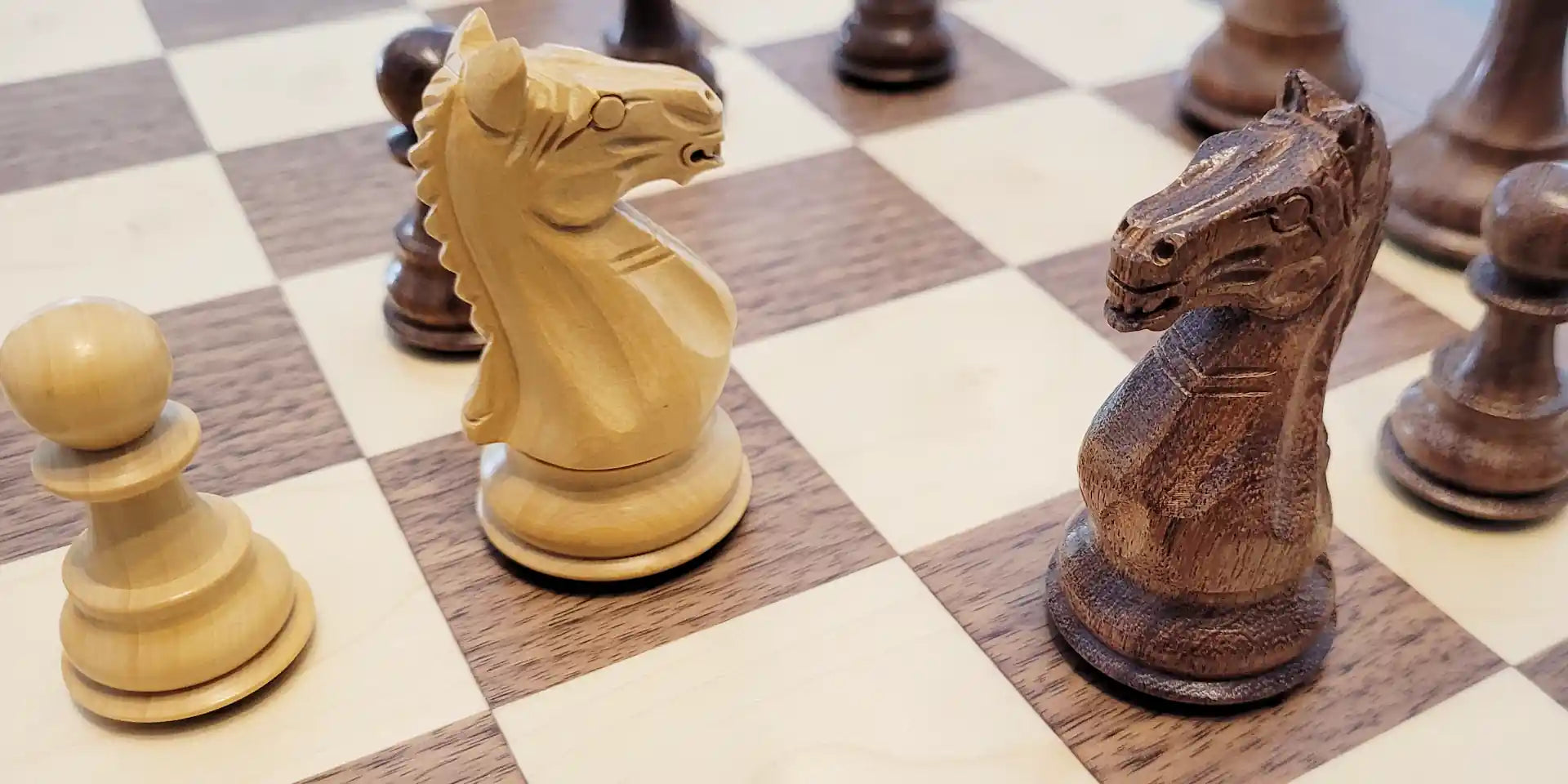
Chess Pieces "Supreme"
The Supreme set is one of the most popular chess piece sets in the Staunton segment. It owes its popularity mainly to its detailed, aggressively appearing knight and the general grip that all the pieces offer.
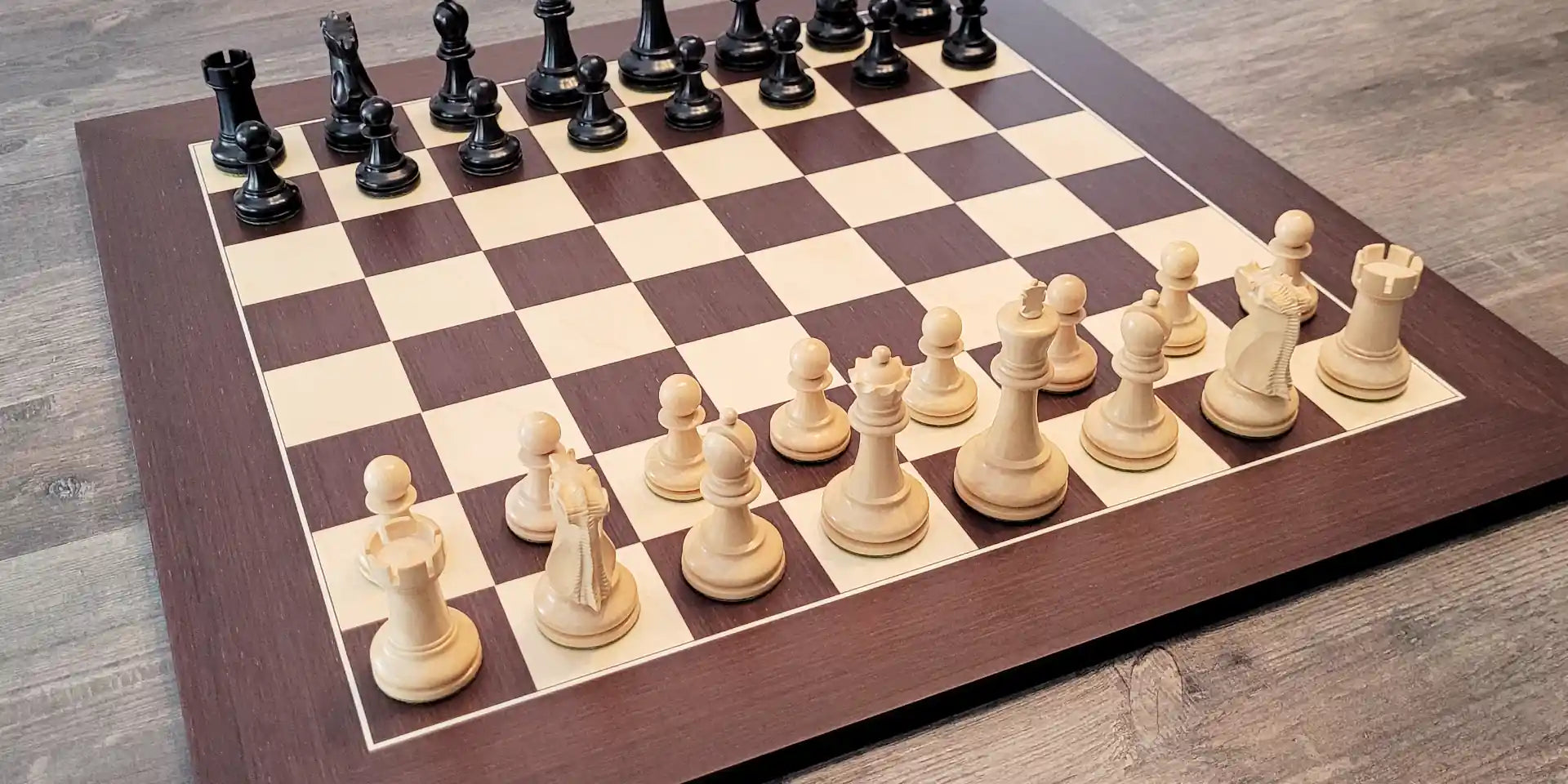
Chessboard "Wengé Deluxe"
Discover a great chessboard with a field size of 55 mm and overall dimensions of 550 mm. Ideal for chess pieces in tournament format and for an impressive appearance on any table.
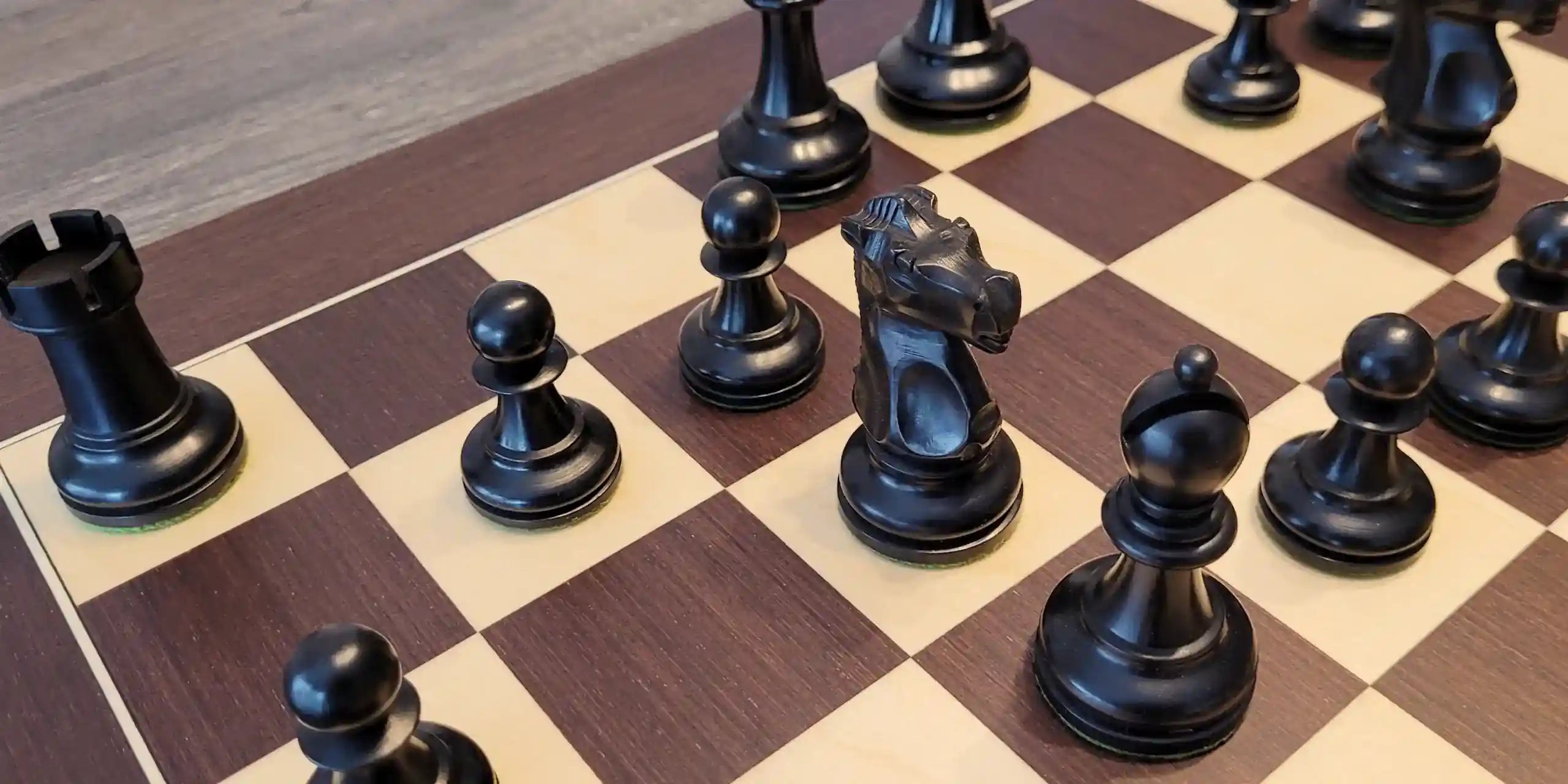
Pieces "Fischer"
The Fischer chess piece set features a strong, upright knight and a weight distribution that is concentrated at the base of the pieces, giving them better stability.
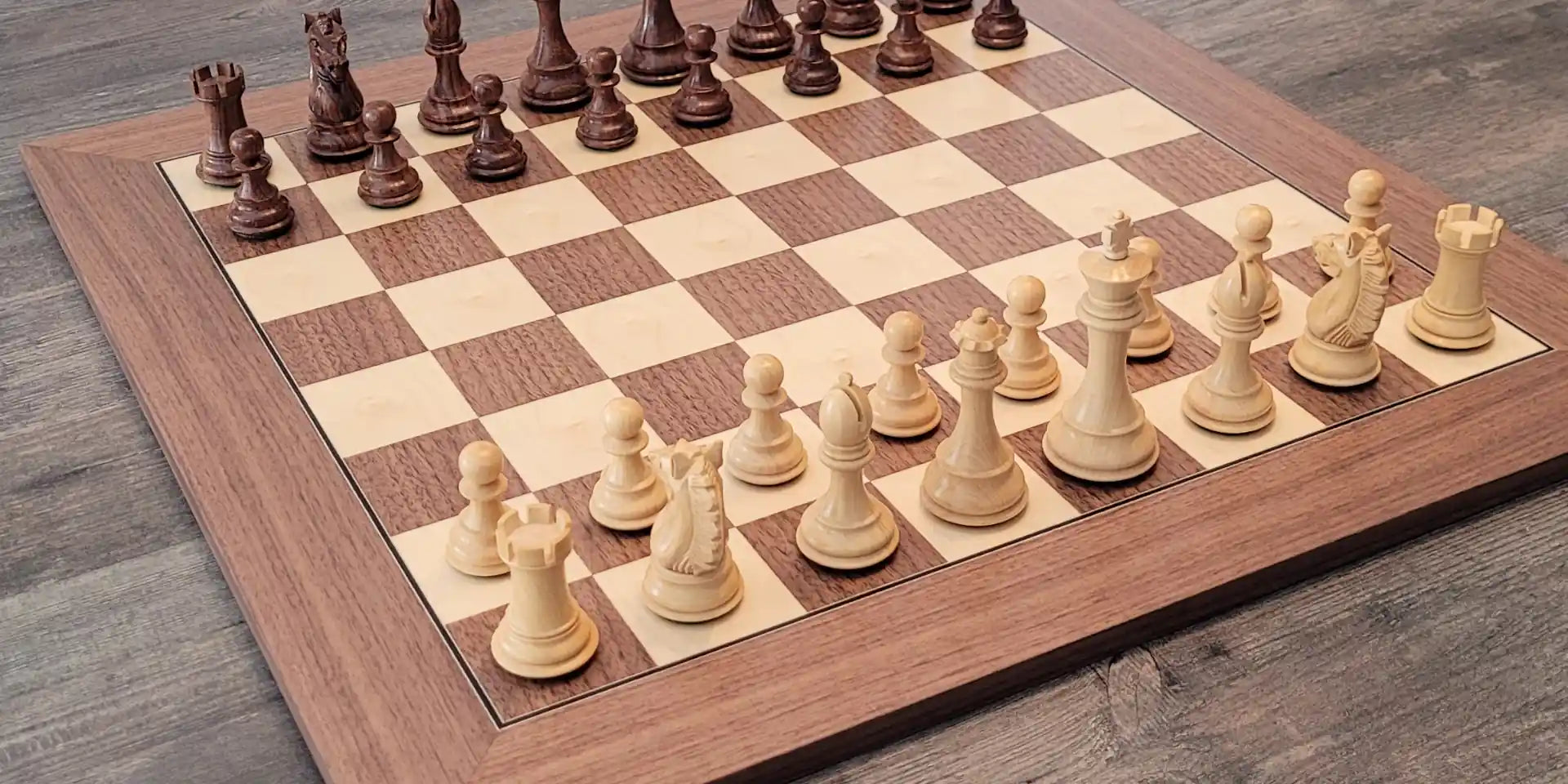
Chessboard "Walnut Deluxe"
The Walnut Deluxe chessboard impresses with a desaturated walnut color tone that matches a variety of piece sets. With a field size of 55 mm and 550 mm total size, it is also compatible with all tournament pieces.
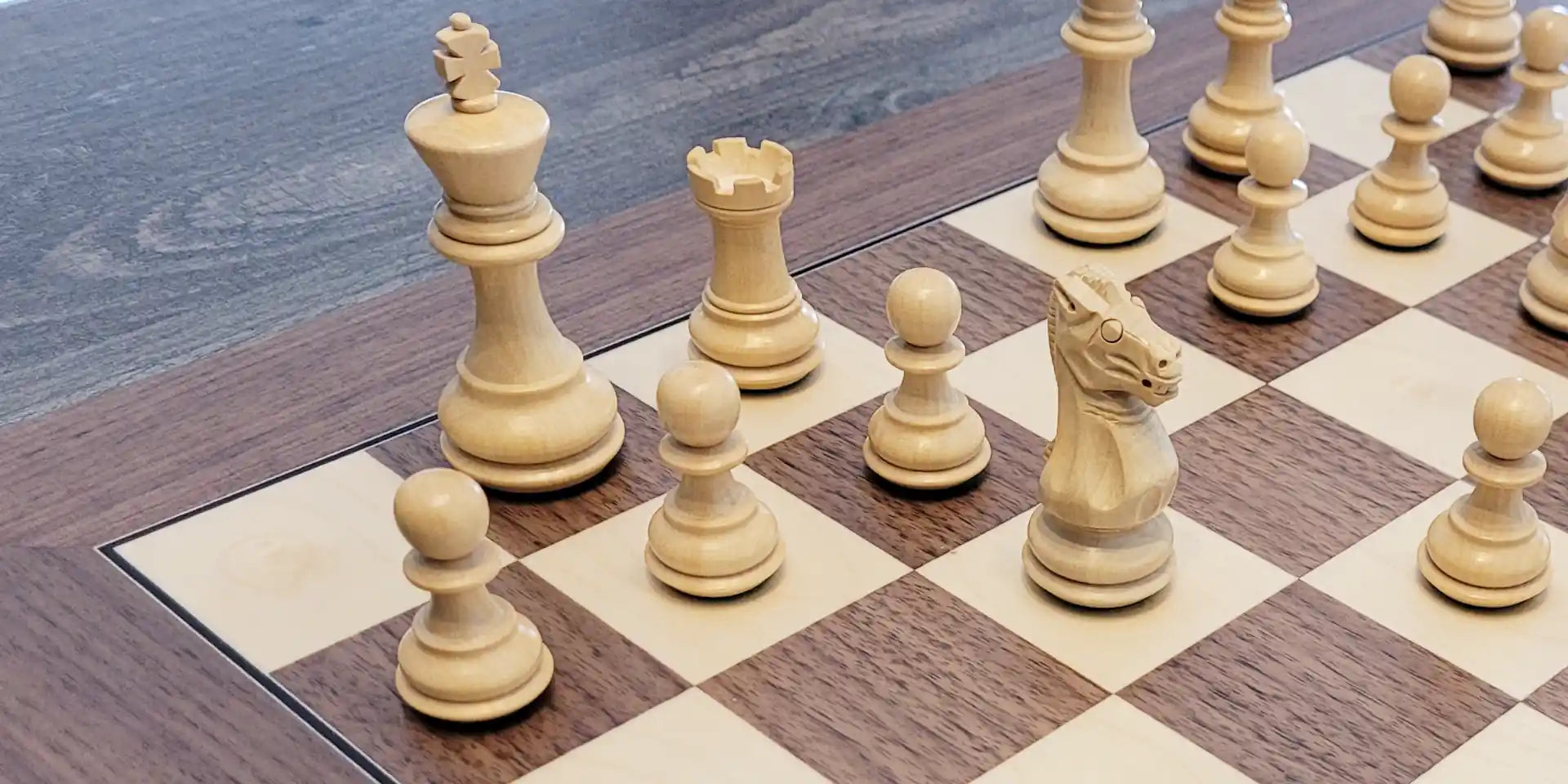
Chess Pieces "Grace"
The chess pieces of the Grace set have a timeless, sleek design and a forward-facing, focused knight that looks equally elegant and threatening.
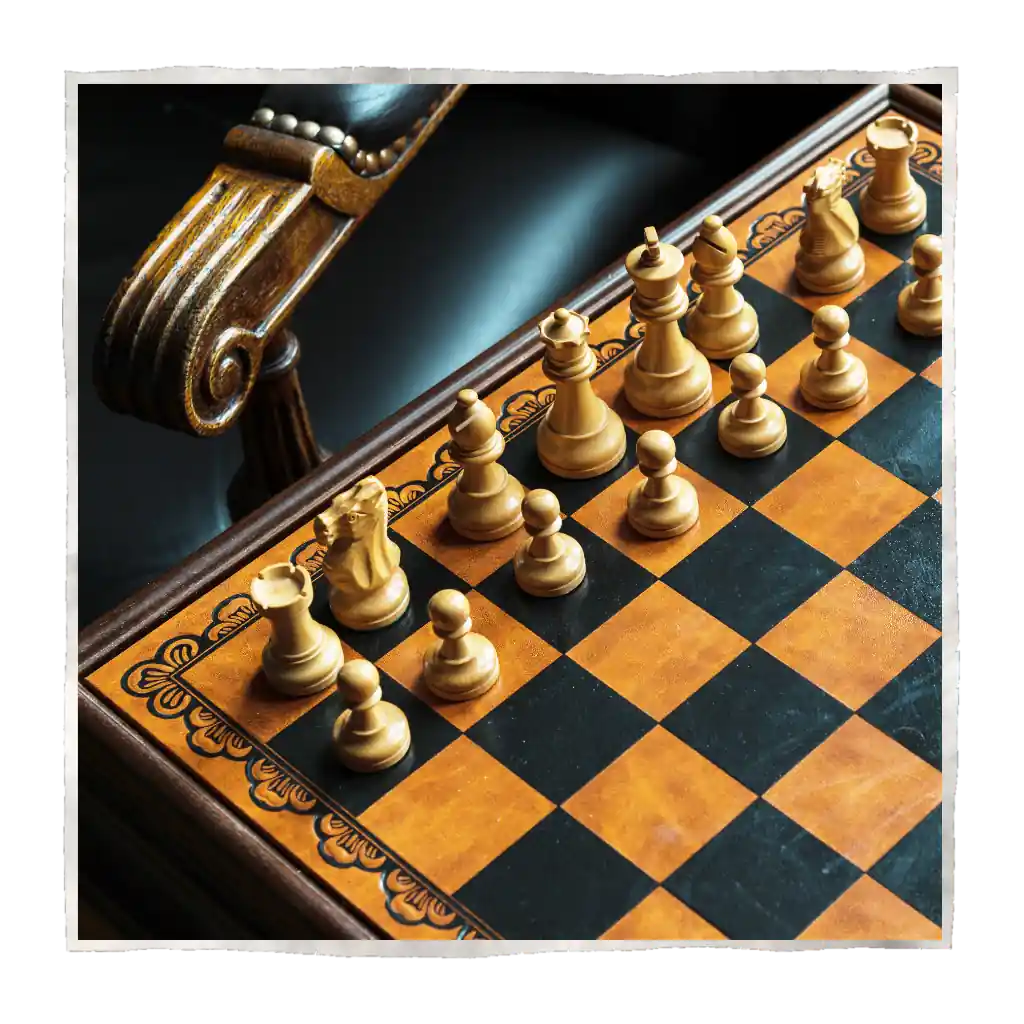
Learn to Play Chess
If you have never played chess before, are not yet familiar with chess pieces or have not yet mastered the rules of chess, you will find detailed instructions here on how to learn to play chess and improve your skills.
You will receive a detailed explanation of the rules of movement of all chess pieces, illustrated with examples, an explanation of all special rules and helpful tips for getting started.
And if something is still unclear, don't hesitate to ask via the contact form.
Staunton Chess Sets made of Wood
-
Chess Set "Berlin at Dawn" - Staunton Chess Pieces "German Knight" & Chessboard "Mahogany Deluxe"
Regular price €189,95 EURRegular price -
Chess Set "Paris at Dusk" - Staunton Chess Pieces "French Staunton" & Chessboard "Wenge Deluxe"
Regular price €209,95 EURRegular price -
Chess Set "London at Dawn" - Staunton Chess Pieces "Supreme" & Chessboard "Walnut Deluxe"
Regular price €219,95 EURRegular price -
Chess Set "Manchester at Dusk" - Staunton Chess Pieces "Grace" & Chessboard "Black Deluxe"
Regular price €229,95 EURRegular price
Strategy & Tactics
View all-
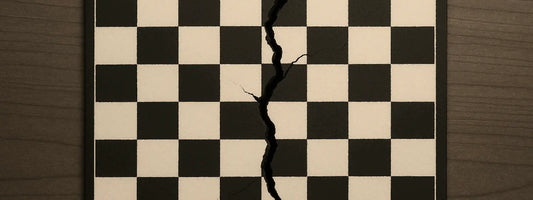
Chess & Strategy: Open vs. Closed Games
Open games are tactical, fast, and dynamic – closed games are strategic, patient, and deep. Those who understand both have greater control over the game.
Chess & Strategy: Open vs. Closed Games
Open games are tactical, fast, and dynamic – closed games are strategic, patient, and deep. Those who understand both have greater control over the game.
-
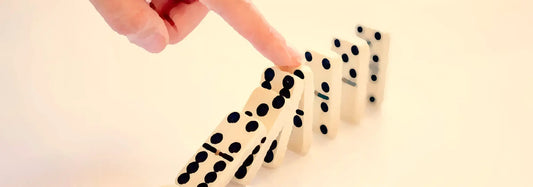
Chess & Tactics: The Stalemate – An Unexpected End
Stalemate is a rare but critical rule that often occurs in endgames. It saves seemingly lost games and demands tactical skill from both players.
Chess & Tactics: The Stalemate – An Unexpected End
Stalemate is a rare but critical rule that often occurs in endgames. It saves seemingly lost games and demands tactical skill from both players.
-
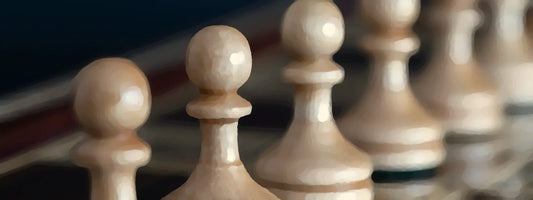
Chess & Tactics: Pawn Promotion – The Pawn’s As...
Pawn promotion can turn a game on its head. It is the ultimate goal of any endgame strategy and requires both foresight and precise execution.
Chess & Tactics: Pawn Promotion – The Pawn’s As...
Pawn promotion can turn a game on its head. It is the ultimate goal of any endgame strategy and requires both foresight and precise execution.
Why Chess Chivalry?
-

Global Search
Selection of high quality chess pieces and chess boards
-

Handcrafted
All chess pieces are handmade, felted and weighted
-

Noble Wood
Only high quality woods are used for manufacturing
-

Advice
Advice for the right purchasing decision
-

Visual Inspection
Each product is checked by hand before dispatching
-

Free Delivery
Free delivery to all supplied countries in the EU
Staunton Chess Pieces Made of Wood
-
Chess Pieces "German Knight" | Staunton | 95 mm | Boxwood & Acacia
Regular price €99,95 EURRegular price -
Chess Pieces "Alban Knight" | Staunton | 101 mm | Boxwood & Ebonized Wood
Regular price €149,95 EURRegular price -
Chess Pieces "Supreme" | Staunton | 95 mm | Boxwood & Acacia
Regular price €129,95 EURRegular price -
Chess Pieces "Oxford" | Staunton | 95 mm | Boxwood & Ebonized Wood
Regular price €129,95 EURRegular price
An Overview of the Chess Pieces
-
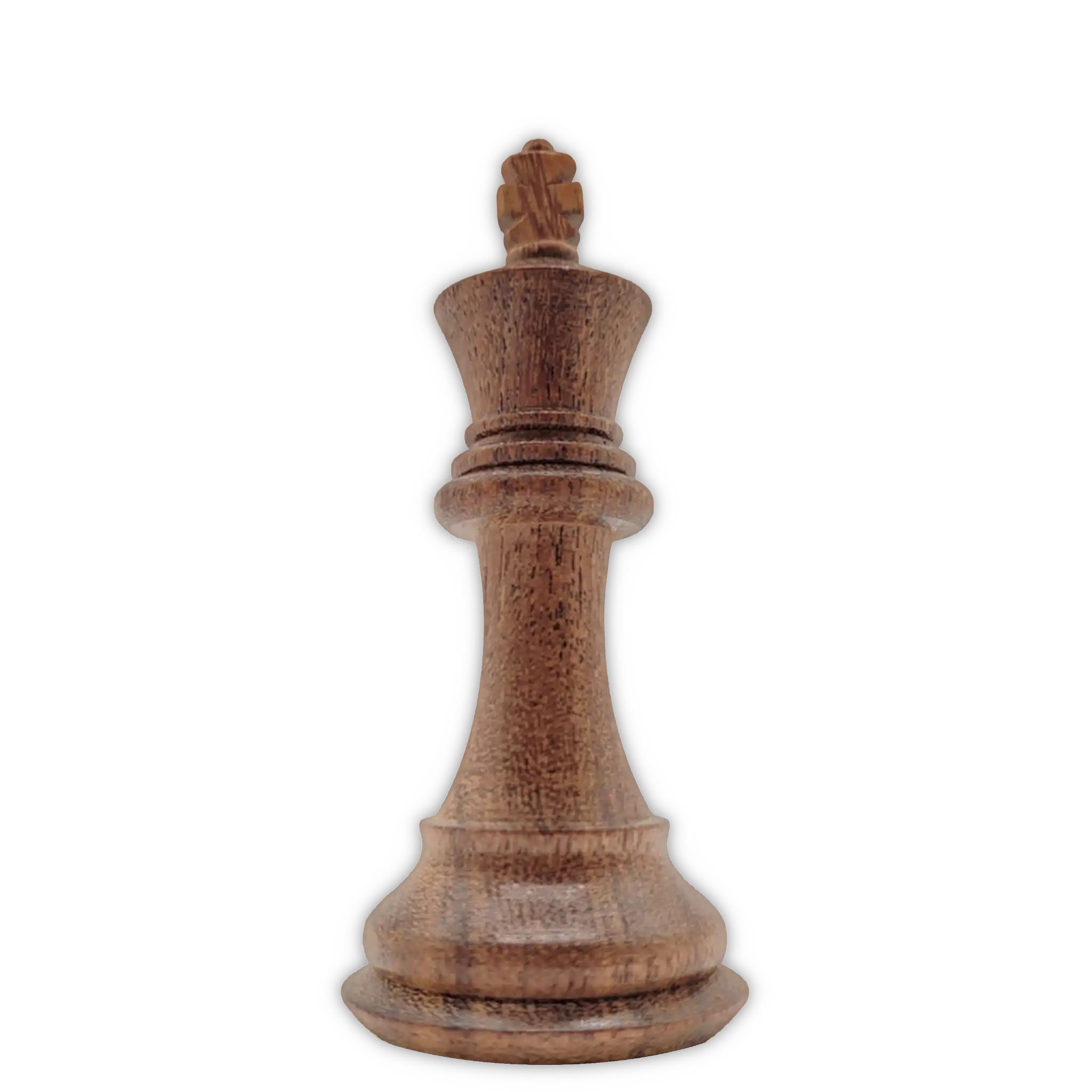
The King
The king is the most valuable and vulnerable piece on the board. Defending him at all costs and at the same time checkmating the opponent's king is both the challenge and the goal of chess.
-
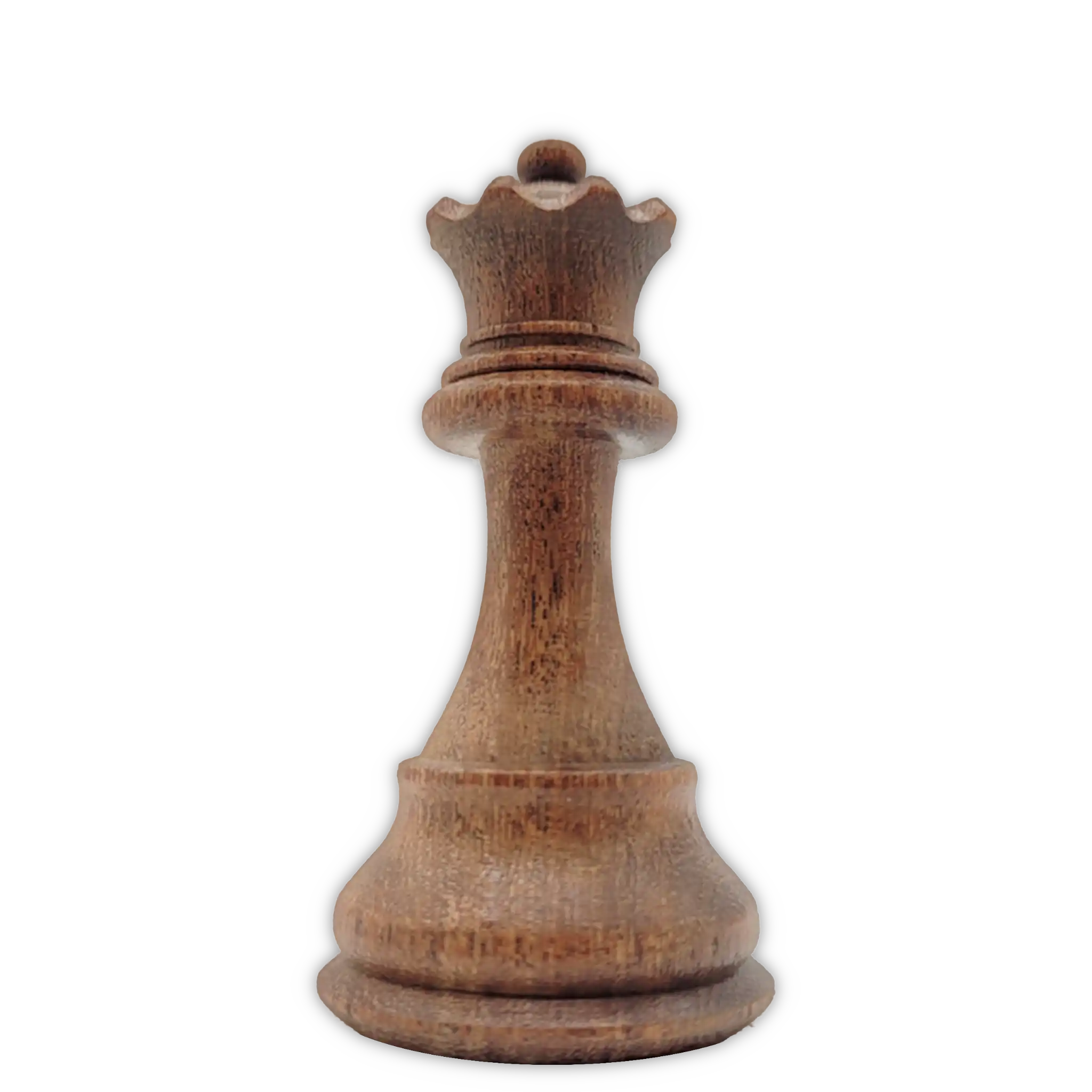
The Queen
The queen is the second most valuable and also the strongest piece on the board. Despite her high standing, she is nevertheless a prioritized target of attack and must always be moved with caution.
-
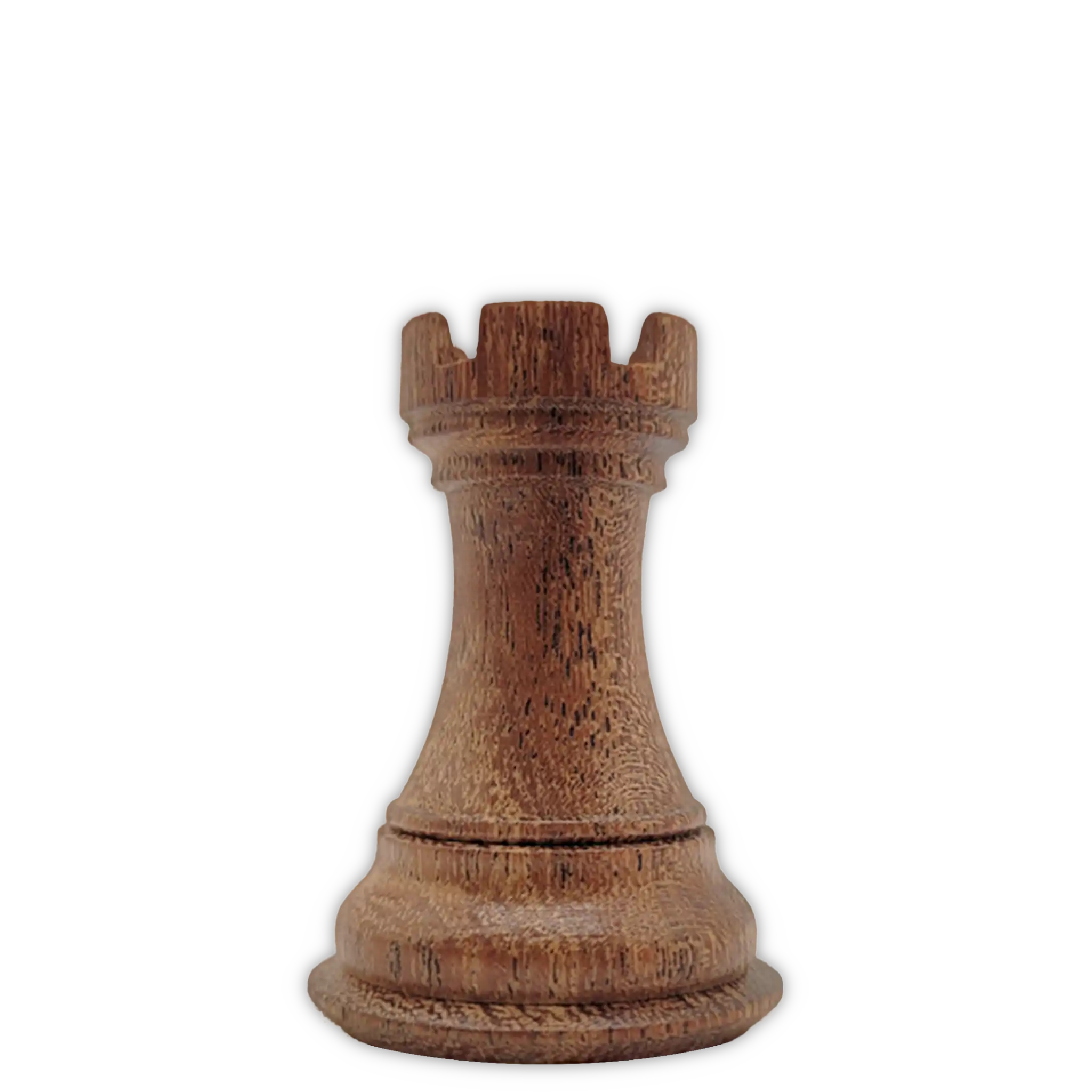
The Rook
The rook symbolizes both the castle and the walls of the kingdom. It is a valuable piece, protecting the king through castling, usually becoming active in the middlegame and often dominating the endgame.
-
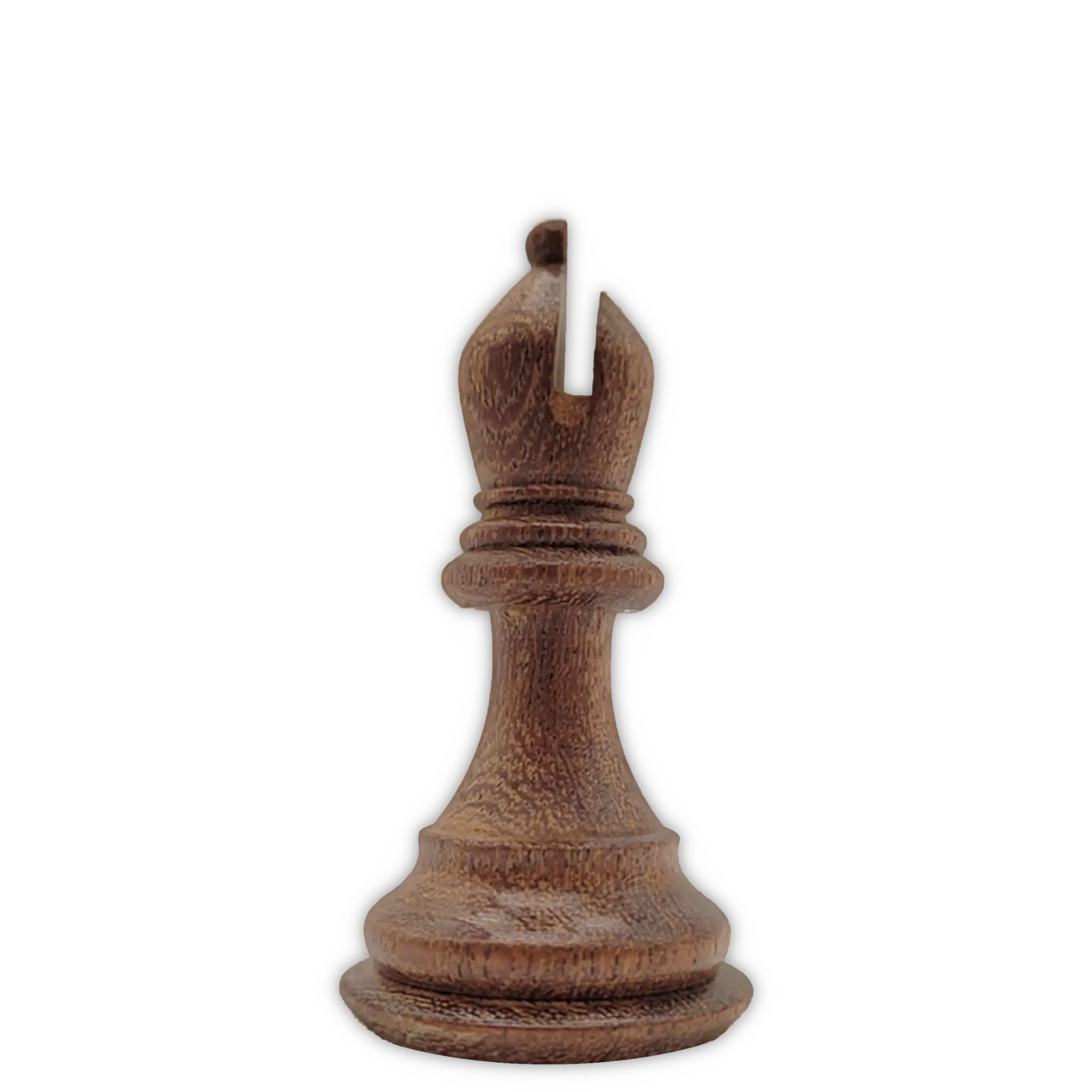
The Bishop
The bishop symbolizes the religion and faith in a kingdom and has a far-reaching influence on the outcome of a battle, although he must limit his abilities to the color of his field.
-
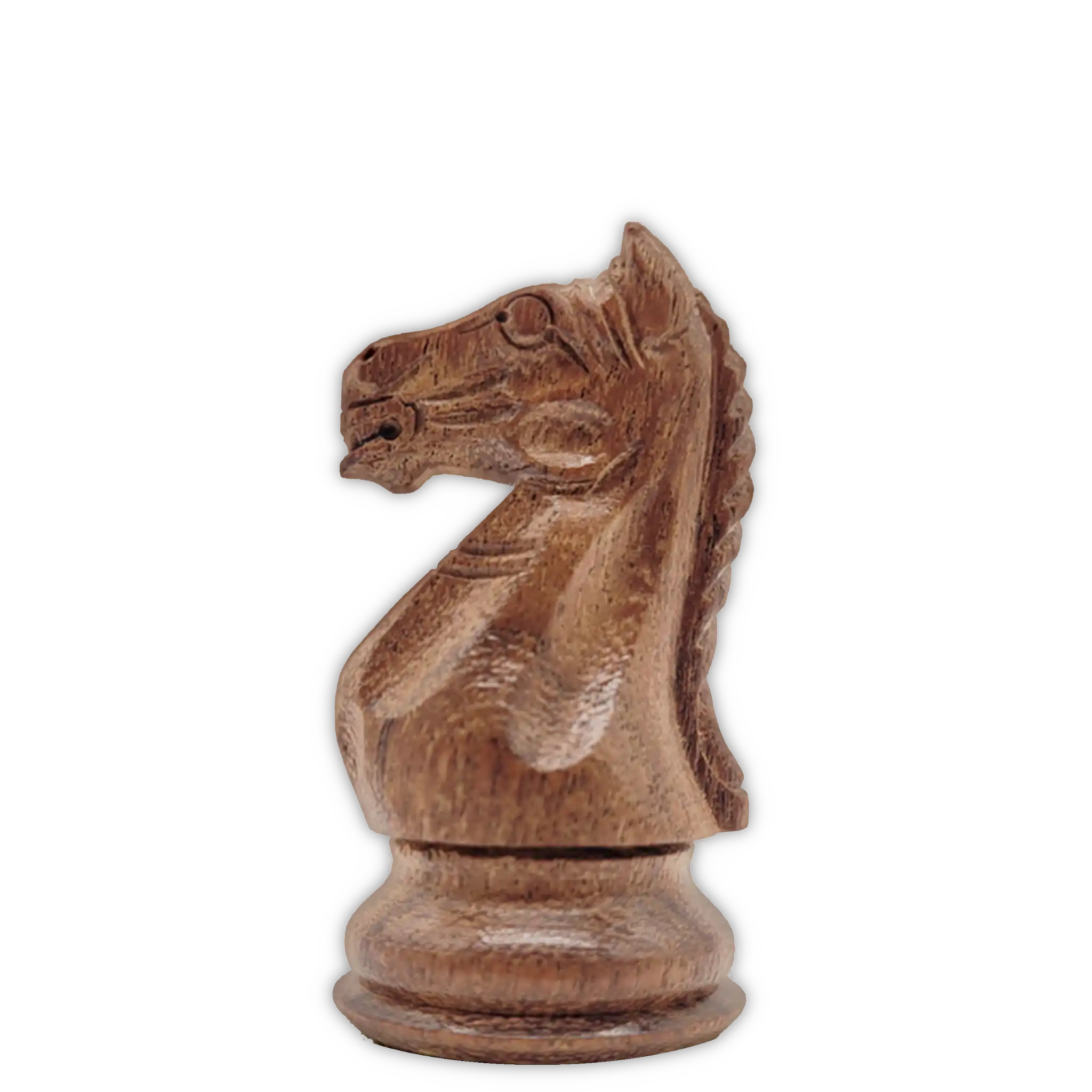
The Knight
The knight embodies chivalry and the element of surprise in chess. It is the most expressive piece on the field and has a unique movement pattern that can turn the course of the game at any time.
-
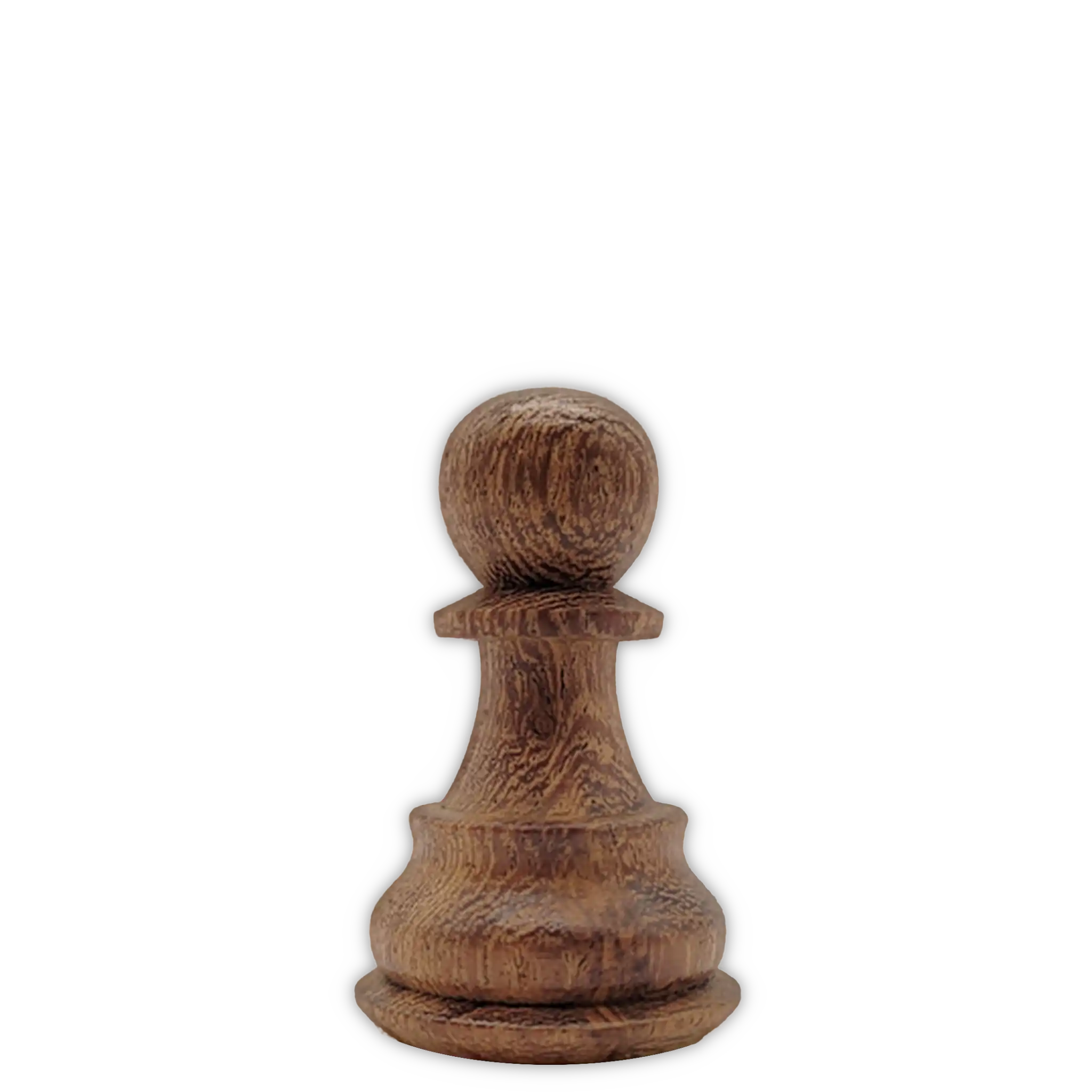
The Pawn
The pawn is an often underestimated piece. Even though he has only a simple movement pattern, he essentially shapes the battlefield and sacrifices himself for his king at every favorable opportunity.
Tournament Size Chessboards Made of Wood
-
Chessboard "Mahogany Deluxe" | Tournament Size | 55 mm | Mahogany & Maple
Regular price €99,95 EURRegular price -
Chessboard "Walnut Deluxe" | Tournament Size | 55 mm | Walnut & Maple
Regular price €99,95 EURRegular price -
Chessboard "Wengé Deluxe" | Tournament Size | 55 mm | Wengé & Maple
Regular price €99,95 EURRegular price -
Chessboard "Black Deluxe" | Tournament Size | 55 mm | Poplar & Maple
Regular price €109,95 EURRegular price
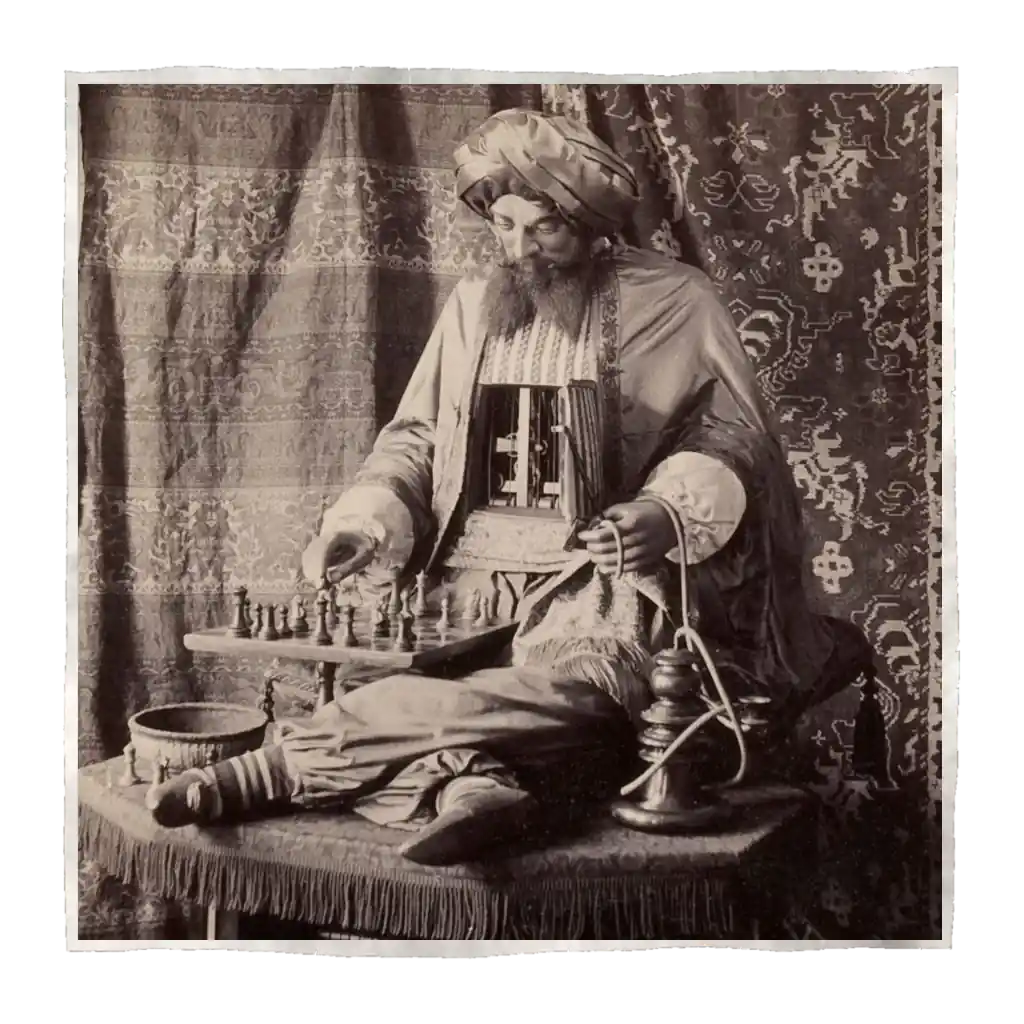
A Long History
With a history of over 1,400 years, chess is one of the oldest surviving board games in the world. In this time the chess game has changed a lot, be it in the appearance of the chessboard and its chess pieces, in the adaptation of the rules up to its political influence. The following is a review of the history of chess from the 7th century AD to the present day.
Highlights - Chess Pieces
Chess Pieces "Supreme" | Staunton | 95 mm | Boxwood & Acacia
Chess Pieces "Zagreb" | Staunton | 95 mm | Boxwood & Ebonized Wood
Chess Pieces "Imperial" | Staunton | 96 mm | Boxwood & Palisander
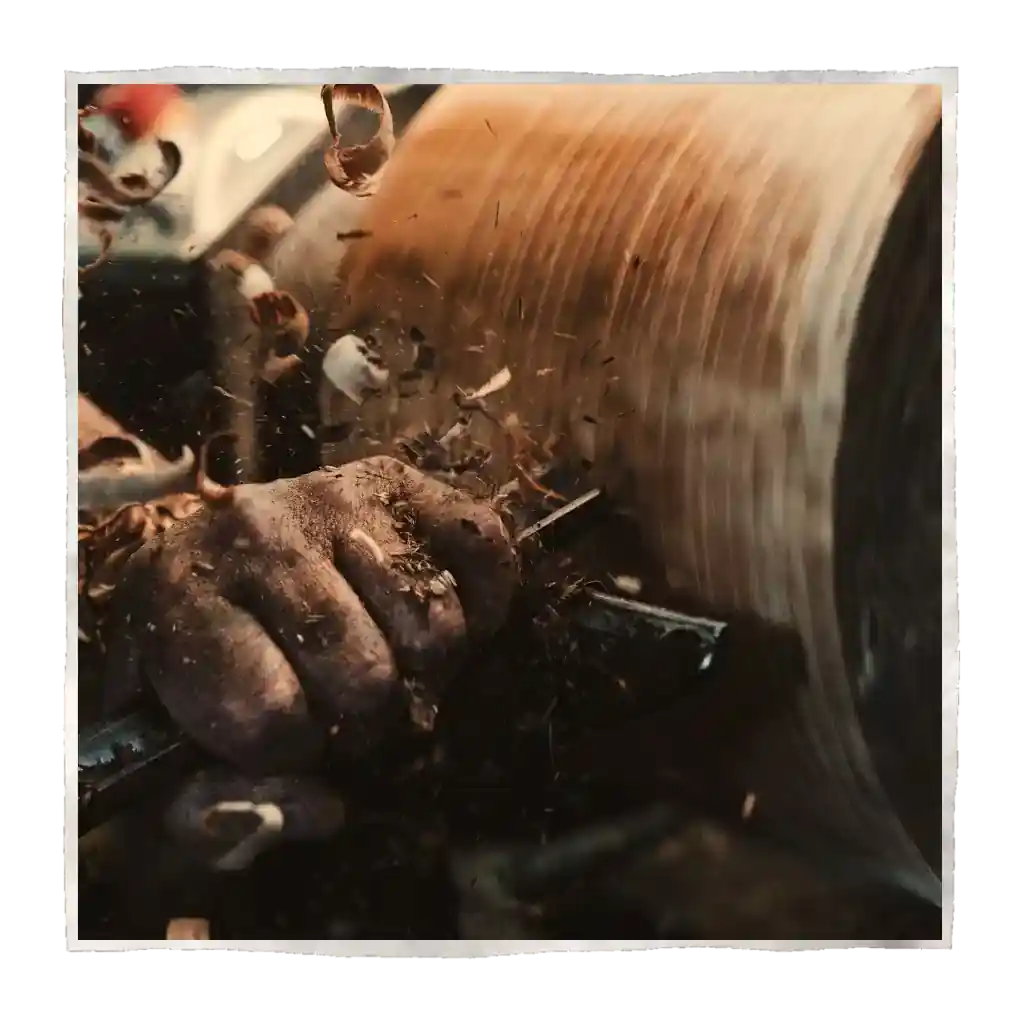
Wood Types
The wood used makes up the soul of a chess set. Depending on the material processed, the chess pieces and chess boards appear in a wide range of colours, which can vary from deep black to radiant rosé. Below you will find an overview of the most common woods and their appearances.
FAQ
Is it worth buying a tournament chess set even if I don't play regularly?
Tournament-sized chess sets are very impressive and their size should not be underestimated. Setting up the chess board and pieces takes up quite a bit of space. However, the board can also be decoratively leaned against a wall and the pieces placed in front of it to save a little space. So, if decorative use is important to you in addition to playing, purchasing a tournament set is a good choice.
Are all your products made of wood and hand-carved?
All my products are made of wood and partly hand carved. The proportion of manual manufacturing depends entirely on the product. Chess boards are sawn to size and glued, while chess pieces are turned and in the case of the knight even elaborately carved.
Why can I only order chess products in tournament formats from you?
I have focused on tournament formats because, in my view, they offer the optimal game size for an original game experience and also have a lot to offer in a decorative sense. In addition, they immediately give the player a feeling of the value that chess should have.
To which countries do you deliver your chess products?
Currently I only deliver my products within the following countries: Belgium, Bulgaria, Czech Republic, Estonia, France, Germany, Ireland, Italy, Luxembourg, Malta, Netherlands, Norway, Slovenia.
How long does the delivery take?
The exact delivery time depends on the respective logistics partner. As a rule, the products should reach you in Germany within 2 to 4 working days. Deliveries abroad usually take 2 - 8 working days.
Further information
-
Staunton Chess Pieces
Staunton Chess PiecesStaunton chess pieces have been the design standard at international tournaments since the 19th century. Developed by Nathaniel Cooke and promoted by the famous chess player and eponym Howard Staunton, the design became groundbreaking for an attractive appearance and good handling in play. Today, there are a large number of Staunton chess pieces with different appearances. However, the king and queen always wear a crown and coronet. The bishop is modelled after a mitre. The knight, the most defining piece on the board, has a variety of shapes, all of which are modelled after a horse and which is thus the most characteristic element of the piece set. The rook has a solid and strong presence and the pawns are represented by a kind of knob. Although unusual in tournament sets, Staunton sets are sold commercially with additional queens to allow two queens to be represented on the board in the event of a pawn promotion. I offer a wide selection of Staunton chess pieces in my shop. All pieces are weighted, felted, carved by hand and each set is also equipped with additional queens. In addition, each set is checked personally by me before shipping.
-
FIDE Standard for Chess Equipment
FIDE-Standard Chess SetsThe FIDE standard defines a tournament standard in chess. In addition to the chess rules, the standard for chess equipment is also described. In particular, the requirements for the chess pieces and the chess boards are defined here. The standard is to use Staunton chess pieces, which must be clearly distinguishable from each other. Accordingly, the king should have a size of approx. 95 mm and its crown should distinguish him from the queen and her coronet. The bishop usually wears a mitre, which distinguishes him from the pawns. The knight may have distinctive features, but should be easily handled. Colours allowed for the dark pieces are black or dark brown, for the white pieces white or cream. The chessboard should have a field size of 50 to 60 mm, but boards with a field size of 55 to 58 mm are common. The colour of the boards can be light or dark, but gloss should be avoided and a matt surface should be used. All products in my shop correspond in the sizes of the FIDE standard and are compatible with each other. Each set of chess pieces has a king height between 90 mm and 104 mm and can be played on all chess boards available on Chess Chivalry (field size 55 mm).
-
Chess Sets from Fine Woods
Learn more about Chess WoodsChess pieces made of wood are not only essential for professional players. Hobby players or occasional players for whom decorative appeal is important will not be disappointed by high-quality chess woods either. High-quality wood is easy to work with and is a natural raw material that is both sustainable and eco-friendly. In addition, the craftsmanship of wood in the manufacture of chess pieces and chess boards represents a passionate artwork that significantly shapes the value of a chess set. A good chess set lasts a long time and is usually also bequeathed, which is why a purchase should be well-considered and only made after extensive research. Common types of wood for chess pieces are acacia, palisander, rosewood or redwood. Mahogany, walnut, wenge and blackened woods are often used for chess boards. The types of wood are also the decisive criteria for the desired colouring and the contrast that is created between the chess pieces and the board. In my shop, I primarily offer acacia, rosewood and ebonised woods for chess pieces. My chess boards are available in black and wenge for rather dark sets, mahogany for reddish to brown sets, and walnut and maple for rather lighter sets.
-
Strategy and Tactics
Have a Look at the BlogChess equipment is not everything. It must also be able to be used and help you to be victorious over your opponent. If you are not yet familiar with chess, Chess Chivalry also offers a detailed explanation of the rules and, via the blog, a first orientation for strategic and tactical questions. So if you don't know where to start, read through the rules with all the movement patterns of the pieces and all the special rules. You want to work on your tactical understanding? Then take a look at the blog posts on chess openings, middlegame and endgame. You think you keep making blunders and want to avoid them in the future? I have written an article about methods that help you develop a more attentive playing style. And if you're wondering in general how chess and its playing techniques have evolved over its long history, feel free to read the history of chess. If you have specific questions, you can also send me a message directly via my form or by email to support@chess-chivalry.com.
